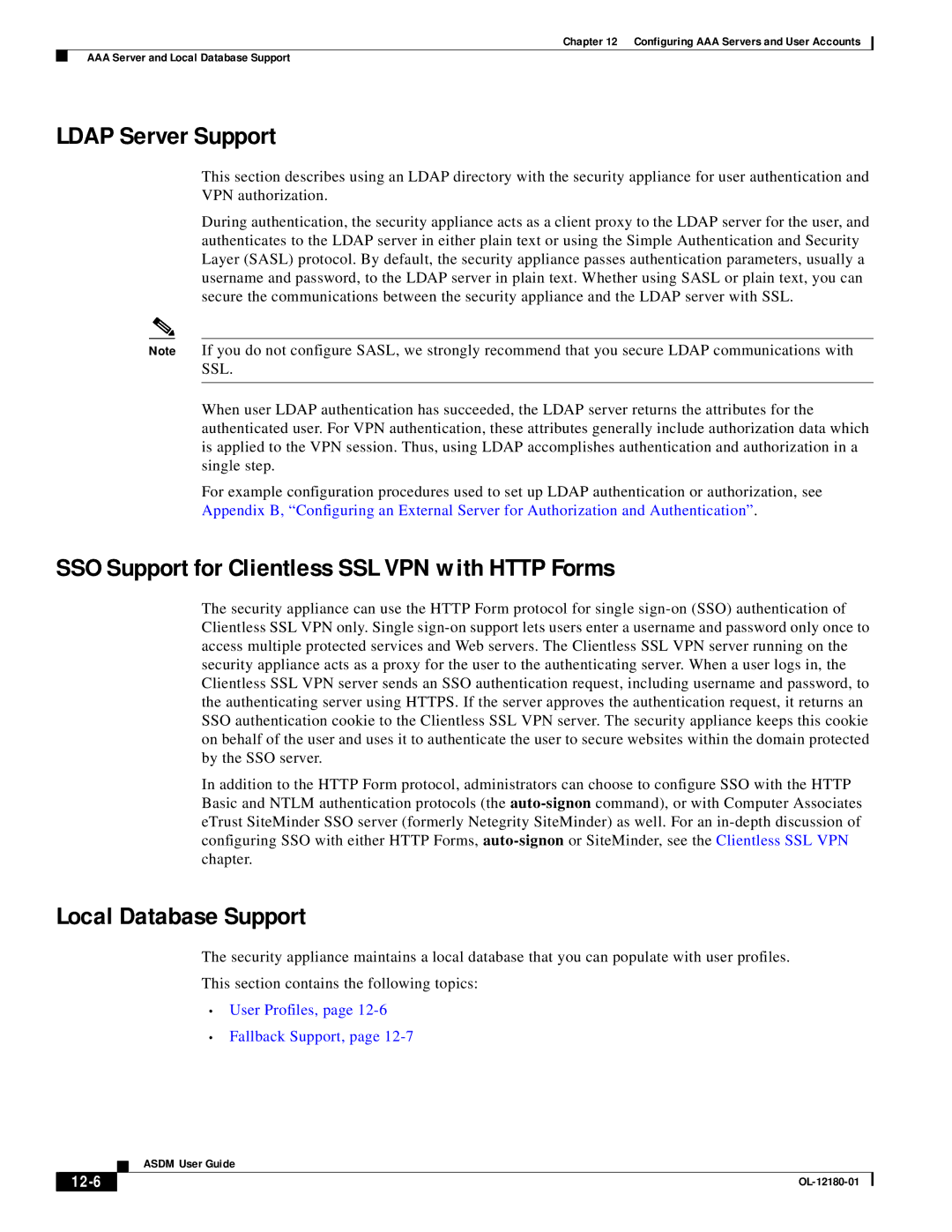
Chapter 12 Configuring AAA Servers and User Accounts
AAA Server and Local Database Support
LDAP Server Support
This section describes using an LDAP directory with the security appliance for user authentication and VPN authorization.
During authentication, the security appliance acts as a client proxy to the LDAP server for the user, and authenticates to the LDAP server in either plain text or using the Simple Authentication and Security Layer (SASL) protocol. By default, the security appliance passes authentication parameters, usually a username and password, to the LDAP server in plain text. Whether using SASL or plain text, you can secure the communications between the security appliance and the LDAP server with SSL.
Note If you do not configure SASL, we strongly recommend that you secure LDAP communications with SSL.
When user LDAP authentication has succeeded, the LDAP server returns the attributes for the authenticated user. For VPN authentication, these attributes generally include authorization data which is applied to the VPN session. Thus, using LDAP accomplishes authentication and authorization in a single step.
For example configuration procedures used to set up LDAP authentication or authorization, see Appendix B, “Configuring an External Server for Authorization and Authentication” .
SSO Support for Clientless SSL VPN with HTTP Forms
The security appliance can use the HTTP Form protocol for single
In addition to the HTTP Form protocol, administrators can choose to configure SSO with the HTTP Basic and NTLM authentication protocols (the
Local Database Support
The security appliance maintains a local database that you can populate with user profiles.
This section contains the following topics:
•User Profiles, page
•Fallback Support, page
| ASDM User Guide |
|
